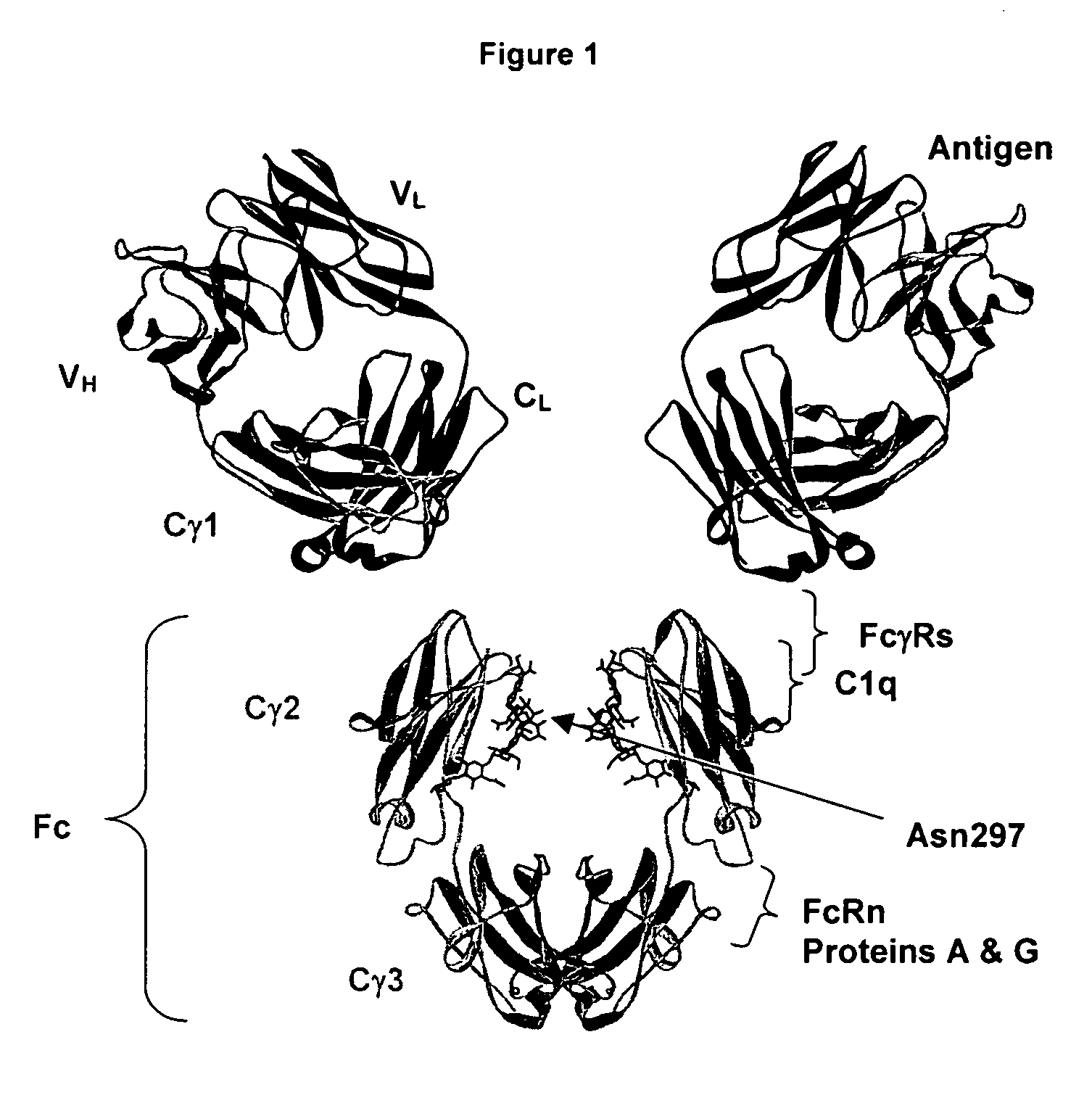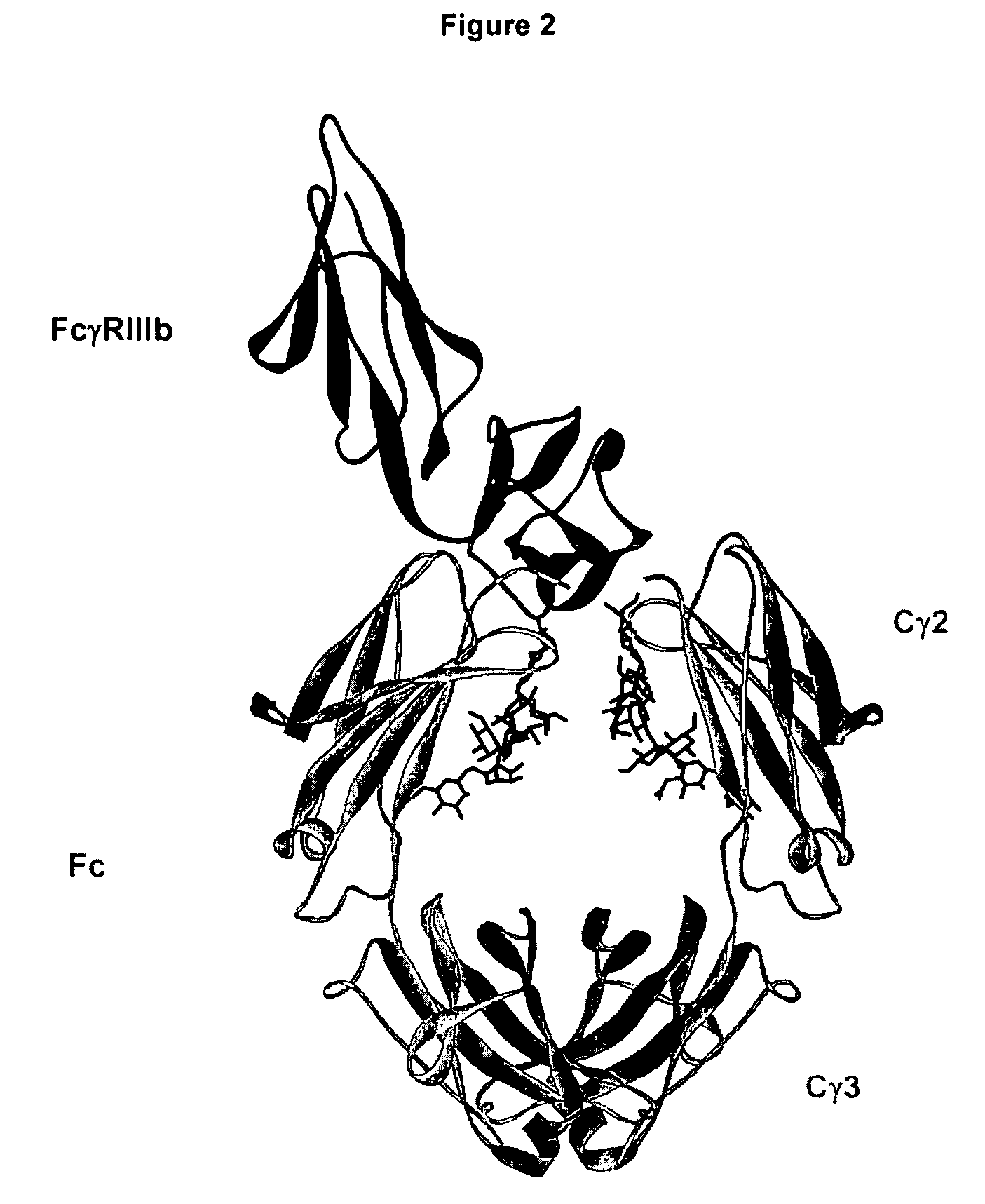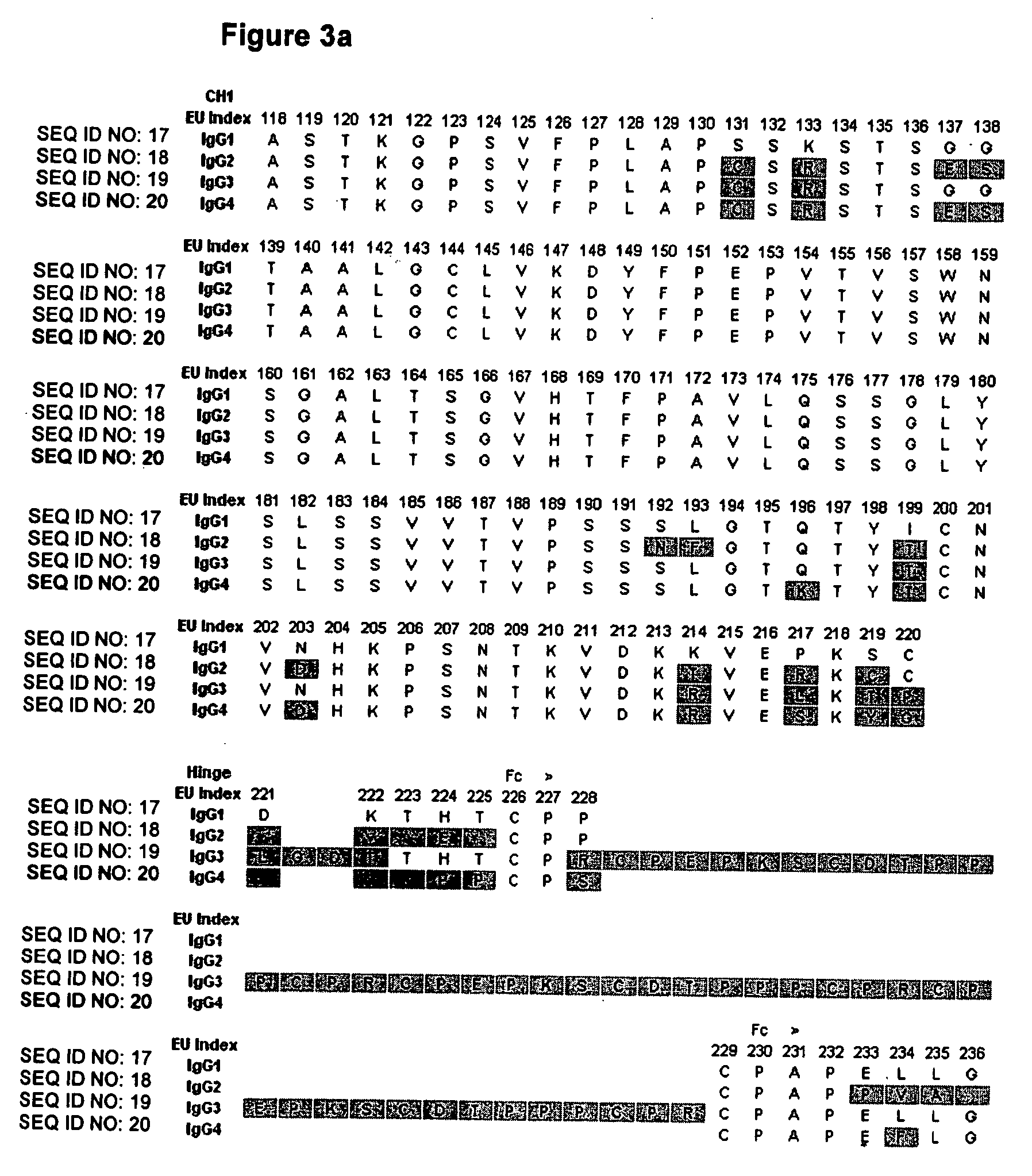Fc variants with optimized properties
a variant and optimized technology, applied in the field of variant polypeptides, can solve the problems of unsatisfactory anti-cancer potency of antibodies, undesirable depletion of target cells, and another level of complexity, and achieve the effects of improving antibody dependent cell-mediated cytotoxicity, improving complement dependent cytotoxicity, and improving binding
- Summary
- Abstract
- Description
- Claims
- Application Information
AI Technical Summary
Benefits of technology
Problems solved by technology
Method used
Image
Examples
example 1
Fc Variants with Enhanced FcγR-Mediated Effector Function
[0161] Using the methods described in U.S. Ser. No. 10 / 672,280, U.S. Ser. No. 10 / 822,231, U.S. Ser. No. 11 / 124,620, and U.S. Ser. No. 11 / 256,060, all hereby entirely incorporated by reference, additional Fc variants were designed for enhanced binding to Fc ligands and optimized effector function, and for reduced or ablated FcγR binding and effector function. The variants were constructed in the context of the anti-CD20 antibody PRO70769 (PCT / US2003 / 040426, hereby entirely incorporated by reference), which is known to mediate measurable CDC and ADCC in cell-based assays. Previously characterized variants were also constructed in PRO70769, in order to further characterize their properties and provide comparators for the current set of new variants. FIG. 5 provides a list of these Fc variants. Notably, this variant set comprises a number of insertions. For example, “Insert L>235-236 / 1332E” refers to a double mutant comprising th...
example 2
Fc Variants with Enhanced Complement-Mediated Effector Function
[0172] A number of variants were designed with the goal of enhancing complement dependant cytotoxicity (CDC). In the same way that Fc / FcγR binding mediates ADCC, Fc / C1q binding mediates complement dependent cytotoxicity (CDC). There is currently no structure available for the Fc / C1q complex; however, mutagenesis studies have mapped the binding site on human IgG for C1q to a region centered on residues D270, K322, P329, and P331 (Idusogie et al., 2000, J Immunol 164:4178-4184; Idusogie et al., 2001, J Immunol 166:2571-2575, both hereby entirely incorporated by reference). FIG. 12 shows a structure of the human IgG1 Fc region with this epicenter mapped. Select amino acid modifications disclosed in U.S. Ser. No. 10 / 672,280, U.S. Ser. No. 10 / 822,231, U.S. Ser. No. 11 / 124,620, and U.S. Ser. No. 11 / 256,060, all hereby entirely incorporated by reference, that are structurally proximal to these four residues were investigated t...
example 3
Fc Variants with Reduced FcγR- and Complement-Mediated Effector Function
[0175] As described above, in contrast antibody therapeutics and indications wherein effector functions contribute to clinical efficacy, for some antibodies and clinical applications it may be favorable to reduce or eliminate binding to one or more FcγRs, or reduce or eliminate one or more FcγR— or complement-mediated effector functions including but not limited to ADCC, ADCP, and / or CDC. This is often the case for therapeutic antibodies whose mechanism of action involves blocking or antagonism but not killing of the cells bearing target antigen. In these cases depletion of target cells is undesirable and can be considered a side effect. Effector function can also be a problem for radiolabeled antibodies, referred to as radioconjugates, and antibodies conjugated to toxins, referred to as immunotoxins. These drugs can be used to destroy cancer cells, but the recruitment of immune cells via Fc interaction with Fc...
PUM
| Property | Measurement | Unit |
|---|---|---|
| Temperature | aaaaa | aaaaa |
| Temperature | aaaaa | aaaaa |
| Temperature | aaaaa | aaaaa |
Abstract
Description
Claims
Application Information
 Login to View More
Login to View More - R&D
- Intellectual Property
- Life Sciences
- Materials
- Tech Scout
- Unparalleled Data Quality
- Higher Quality Content
- 60% Fewer Hallucinations
Browse by: Latest US Patents, China's latest patents, Technical Efficacy Thesaurus, Application Domain, Technology Topic, Popular Technical Reports.
© 2025 PatSnap. All rights reserved.Legal|Privacy policy|Modern Slavery Act Transparency Statement|Sitemap|About US| Contact US: help@patsnap.com



